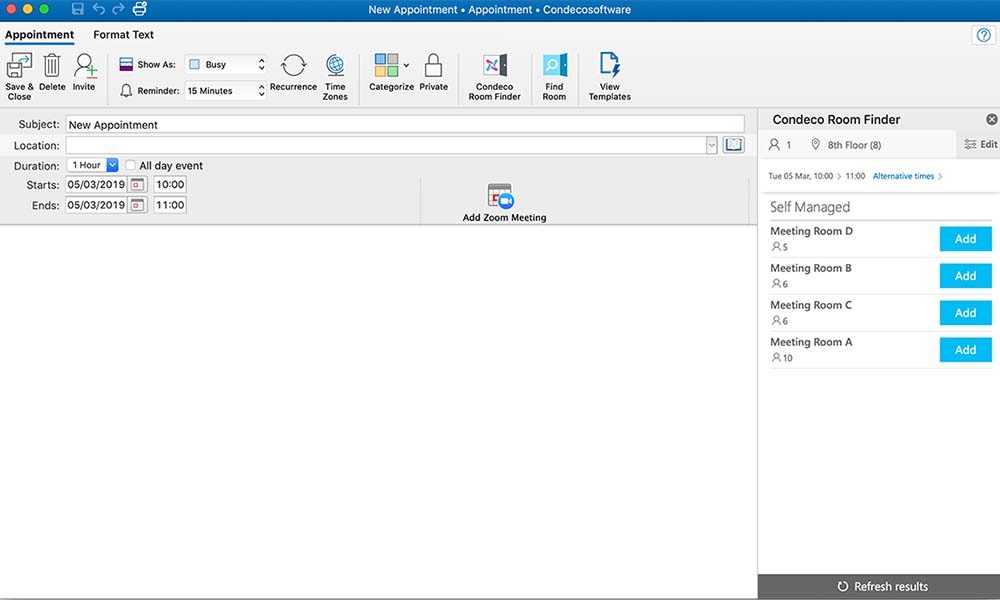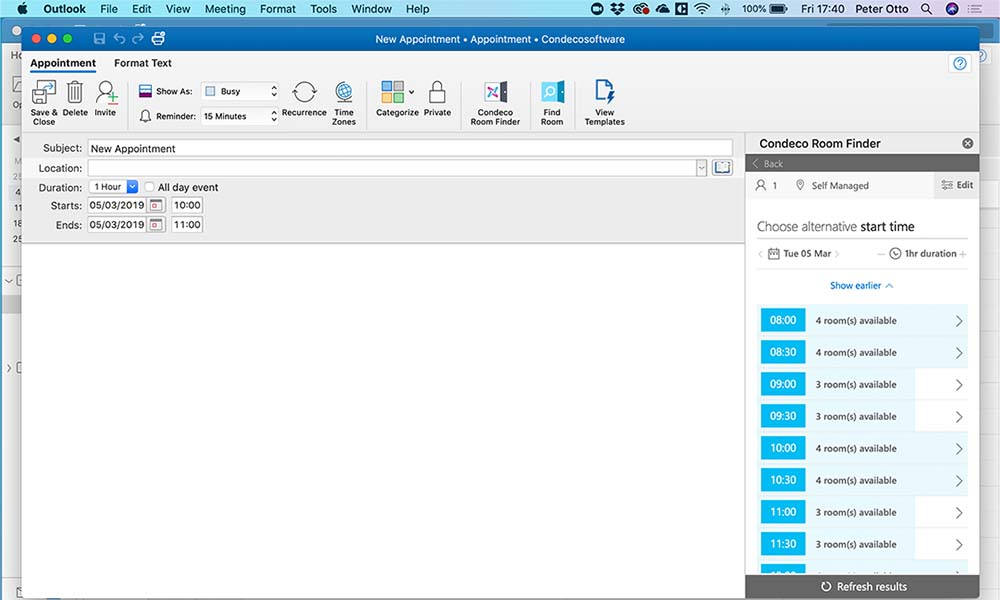
Every working day in our professional lives brings a mountain of work that we have to get through. There are calls to make, reports to complete… and, of course, there are meetings. You’re a busy person, so booking meetings shouldn’t be another thing on your to-do-list that adds to busyness of your day.
Meetings can be especially difficult for us to fit into our schedules because they depend on so many external factors, from availability to coordinating external participants and the visitor management process involved.
Most of us use Microsoft Outlook to do this because it integrates with our emails, calendar, contacts and all manner of other essential elements of our working interaction.But apart from setting a time, a date and inviting people, all the other parts of meeting set-up often have to be done off Outlook, which just adds another layer of complexity to the whole thing.
To make it simpler…
Plug-ins have been developed that connect Outlook to market-leading meeting room and visitor management software</a>; to bring every single part of meeting and visitor management within the capabilities of Outlook.
If you aren’t aware of the scale of what’s possible, then our step-by-step guide to setting up your perfect meeting may be an eye-opener:
Step 1: Find your perfect meeting room
A key part of good visitor management is to make sure that you have the ideal facility for your needs.
For example, if you’ve got a single supplier coming in for a one-on-one with you, then you don’t want to be echoing around a huge conference suite. Equally, if a whole agency team is coming in to pitch to you, cramming them and you into a tiny room is a recipe for disaster.
With your Outlook plug-in, however, these situations can be effortlessly avoided. You can search from a list of meeting rooms available at your requested time, or use a grid view to see what’s available when. Either way, finding the best possible location and integrating into your meeting invitations and information can be done in a matter of seconds.

Step 2: Book your services and extras
Before this brave new world dawned on us, getting all the associated bits and bobs for meetings meant a lot of hard work, emails and phone calls; case in point:
- If you needed video collaboration, then you’d have to get in touch with IT to make sure the camera and monitor were properly set up for the right VC platform.
- If it was a breakfast meeting, then you’d have to contact your canteen or an outside catering firm to make sure your coffee, croissants and orange juice are ready to go.
- And if it’s a joint meeting via video link with your Dubai office, you’d need to ensure they had a meeting room of their own at the time of the meeting.
With a plug-in for meeting room booking, all of these add-ons and more can be arranged at a click of a mouse. Request some OJ and croissants for the meeting and your catering staff automatically receive a timed and dated request.
Same goes for IT with your video collaboration equipment. And if multiple offices are integrated into the system, you can see office availability in the Dubai office and make their booking for them yourself from your own Outlook.
Step 3: Delight your visitors
- Adding visitors: Visitor and visitor-specific information is equally as important as the OJ and croissant requirement, and this is where Condeco can also assist. Through the integrated software, front-of-house can also be automatically informed and can are also able to notify the host by email when visitors arrive.
- Send directions: Condeco can automatically send configurable emails with directions to all attendees. You can also notify attendees automatically when the time or location of your meeting changes.
- Check in and out: Visitors can be checked in, out, or go on a break. Walk-in visitors can be effortlessly added into the system by reception staff.
- Print visitor passes: Quickly take photos and print visitor passes for one individual, or a whole group of guests. Passes can be configured for a range of printers, and to meet your organization’s specific requirements.
- Know who’s in the building: With roll call, you can instantly produce a list of who is in the building and which meetings they are attending.
Step 4: Adjust and refine
Of course, it isn’t that often that meeting arrangement is that straightforward. There are a million and one reasons why things have to be changed:
- Illness
- Clashing meetings
- Project delays
- A hold-up in information from a colleague
Any one of these can easily throw your best-laid plans in the air. What matters is how easily you can react to those changes.
A plug-in-equipped Outlook means that when you have to make adjustments, everything else you’ve arranged can easily be adjusted with it.
If a 10am meeting is now a 3pm meeting, and you don’t need those croissants any more, a quick switch of catering requirements turns continental pastries into cheese and pickle sandwiches. And that update goes straight to the caterer, automatically. And if you have to switch meeting room, the info goes straight to your reception and front-of-house teams to make sure that your visitor management stays seamless when partners and suppliers arrive at your building.

Step 5: Synchronize
The best thing about this level of integration is that it’s beautifully suited to our increasingly agile and flexible ways of working. The best plug-ins on the market connect to software that encompasses mobile apps, so that employees out in the field are kept fully in the loop with meeting bookings and changes just as much as office-based staff are. Some solutions even offer synchronization with Microsoft Exchange so that meeting bookings and calendars are always automatically kept in sync.
So the next time you’re tucking into your third croissant of the meeting, remember that if you’ve taken your business to a new level of meeting and visitor management integration, you’ve earned it.



